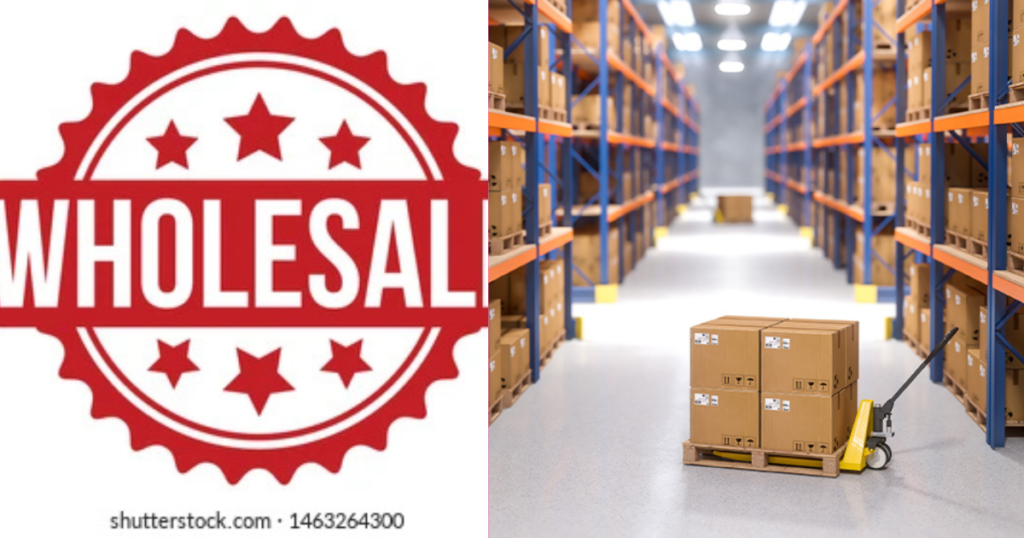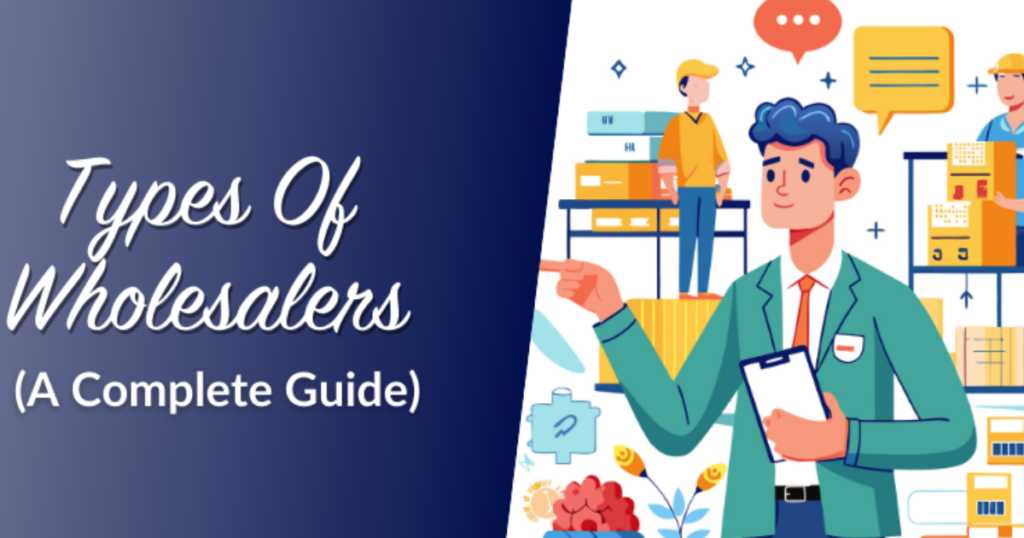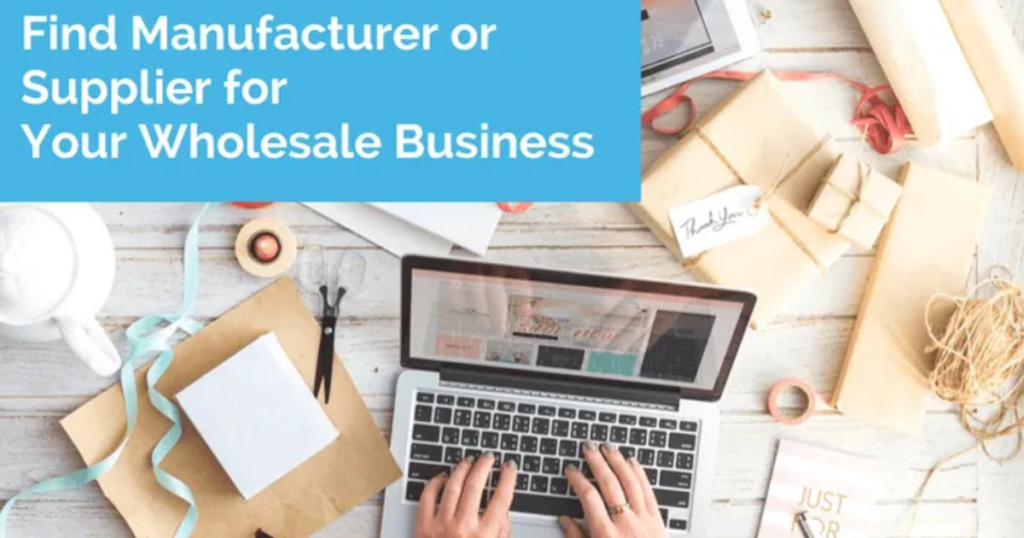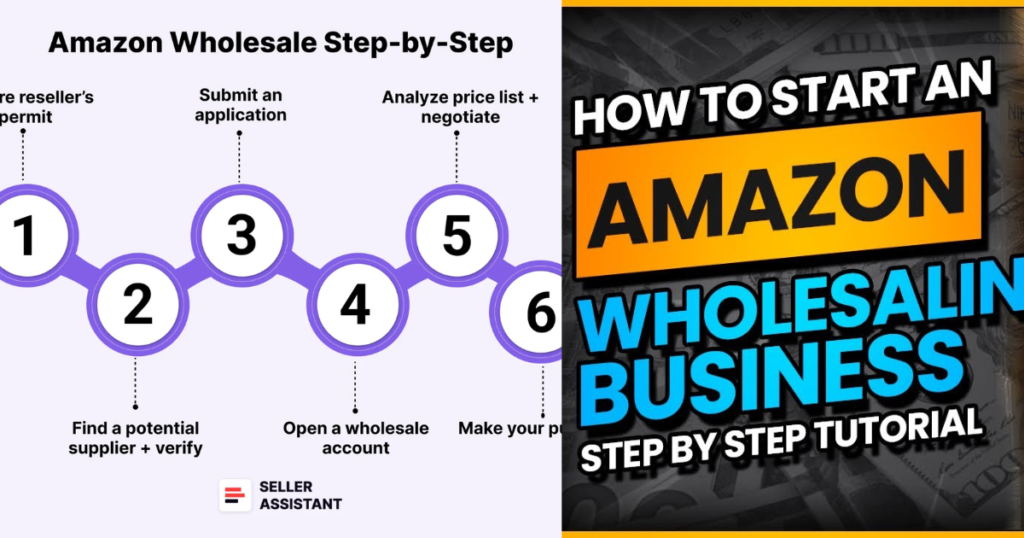
What Is Wholesaling?

Wholesaling means buying a lot of products at one time from the people who make them (manufacturers) and then selling those products to shops or businesses that sell to customers.
Wholesalers buy in big quantities, so they get products at a cheaper price. Then they sell these products to retailers (shops) for a little more money. This is how wholesalers make a profit.
Retailers buy from wholesalers, then sell in smaller amounts to regular customers at a higher price.
For example:
- A fruit wholesaler buys 1,000 apples from a farm.
- The wholesaler stores them in their warehouse.
- They sell the apples in boxes to supermarkets.
- The supermarket sells the apples one by one to shoppers.
How does it work ?
Wholesale works like this: Manufacturers make a large number of products. Wholesalers buy these products in big quantities at cheaper prices. Then, retailers buy from the wholesalers—still in bulk, but in smaller amounts.
This makes it easier for wholesalers because they don’t have to sell to individual customers, and they can still make a good profit. It also helps retailers because they can get all the products they need from wholesalers instead of dealing with many different manufacturers. After buying from wholesalers, retailers sell the products in smaller quantities to customers at a higher price.
Types of Wholesalers

Merchant Wholesalers
Merchant wholesalers buy products in large amounts from manufacturers, store them in their own warehouses, and then sell them to retailers or other businesses. They make money by adding a small profit margin to the price. Full-service merchant wholesalers handle everything, including storage, delivery, and even helping with sales and promotions. Limited-service merchant wholesalers offer fewer services, such as not delivering goods or not offering sales support.
Agents and Brokers
Agents and brokers do not own the products they sell. Instead, they connect buyers and sellers and earn a commission when a deal is made. Agents usually work long-term with one company to help them find customers, while brokers work on individual deals, often in special markets like fashion, seafood, or real estate.
Manufacturers’ Sales Branches and Offices
Some manufacturers sell their products directly to retailers through their own sales offices or warehouses. This allows them to control prices, stock levels, and customer service without depending on middlemen. For example, a factory might have its own showroom where big stores can place orders.
Drop Shippers
Drop shippers don’t keep products in stock. Instead, when they get an order from a retailer, they ask the manufacturer or wholesaler to send the product directly to the customer. This saves storage costs and makes it easy for retailers to offer many products without keeping inventory.
Distributors
Distributors buy products in very large amounts from manufacturers and then sell them to retailers, restaurants, or other businesses. They usually have their own warehouses to store products before selling them. For example, Sysco is a distributor that sells food in bulk to restaurants and hospitals.
Manufacturers as Wholesalers
Sometimes, the company that makes the product also acts as a wholesaler. In this case, they sell directly to retailers or distributors without going through any middleman. For example, a soap-making company might sell cartons of soap straight to supermarkets.
Suppliers
Suppliers are businesses that provide products to other businesses, including manufacturers, distributors, and wholesalers. They usually sell in bulk to retailers or other companies (B2B). For example, TKB Trading supplies ingredients and tools for making cosmetics to small businesses.
How to Find a Wholesaler for Your Business

Finding the right wholesaler for your shop or online store can take time. You need someone who offers the right price, minimum order quantity, and good shipping options. Here are 6 simple ways to find a good wholesaler.
1. Contact the Manufacturer
If you want to sell a certain brand, start by contacting the company that makes it. Sometimes they sell directly to businesses. If they don’t, ask them for a list of their official distributors. The fewer middlemen you use, the lower your costs will be.
2. Ask Local Business Networks
Join groups like the Chamber of Commerce or other business associations in your city. These networks are full of business owners who can recommend trusted wholesalers. Even if they don’t know one, they might know someone who does.
3. Search Online and on Social Media
Use Google to search for wholesalers, distributors, or warehouses. Try different words in your search. Many wholesalers don’t update their websites, so check beyond the first page of results. Also, look on LinkedIn and Facebook—there are many business groups where wholesalers share information.
4. Check B2B Marketplaces
Websites like Alibaba, Global Sources, and EC Plaza let you buy products in bulk at low prices. These marketplaces are great for finding many options in one place. Just make sure the supplier serves your country and meets your needs.
5. Read Trade Magazines and Newsletters
Trade publications are filled with ads and contact details for manufacturers and distributors. You can also sign up for online newsletters and blogs in your industry to stay updated.
6. Attend Trade Shows
Trade shows are events where manufacturers, wholesalers, and retailers meet in person. This is a great way to see products, ask questions, and get special deals. Search online for upcoming trade shows in your area or industry.
How to Start a Wholesale Business on Amazon – Step-by-step

Step 1: Do Product Research
The first thing you need to do is choose which products to sell. Don’t just pick something you think is cool—look at real data to find items that sell well and give good profits. You can either check your supplier’s catalog to see which products have the best profit margins or search Amazon to find popular products and then look for suppliers who sell those items.
Step 2: Use Amazon Product Research Tools
To make product research faster, you can use the Amazon Dropshipping, Arbitrage, and Wholesale Extension. This tool helps you check product margins, fees, and competition.
Step 3: Install the Extension
Go to the link for the tool and install it on your browser. It’s free to start, and you don’t have to give payment details.
Step 4: Search for Product Ideas
Go to Amazon.com and type in keywords for the kinds of products you are interested in, like electronics, clothes, toys, or home items. You can also search for products that are trending in other markets.
Step 5: Check the Data for Each Product
When you see the search results, the tool will show you important details below each product. Look for profit margins above 50%, check Amazon fees, and see who is selling it. Avoid products where Amazon itself is the main seller.
Step 7: Review the Top Products
Click on the best products from your list to see if they are restricted, hazardous, or private-label only. Choose products that you are allowed to sell.
Step 8: Check Product History
Look at the product’s price history and Buy Box history to see how stable the sales and prices are. This helps you plan your pricing strategy.
Step 9: Calculate Your Potential Profit
Use the built-in calculator to enter your costs, like shipping, ads, and other expenses. This will tell you how much profit you can expect for each product.
FAQs
1. What is Amazon wholesale?
Amazon wholesale is when you buy products in bulk from suppliers or manufacturers at lower prices and then resell them on Amazon at a profit.
2. Do I need a special account for Amazon wholesale?
Yes, you need a Professional Amazon Seller account to sell wholesale products on Amazon.
3. Can I buy wholesale products directly from Amazon?
No, Amazon does not sell wholesale products directly. You have to buy from third-party wholesale suppliers or distributors.
4. Is Amazon wholesale profitable?
Yes, it can be very profitable if you choose the right products, find trusted suppliers, and manage your costs well.
Conclusion
Starting an Amazon wholesale business can be a profitable venture if you follow the right steps, from doing detailed product research to choosing trusted suppliers and managing your costs. By understanding how wholesale works, using the right tools, and making data-driven decisions, you can reduce risks and increase your chances of success. With patience, smart planning, and consistent effort, Amazon wholesale can become a sustainable and rewarding business.



